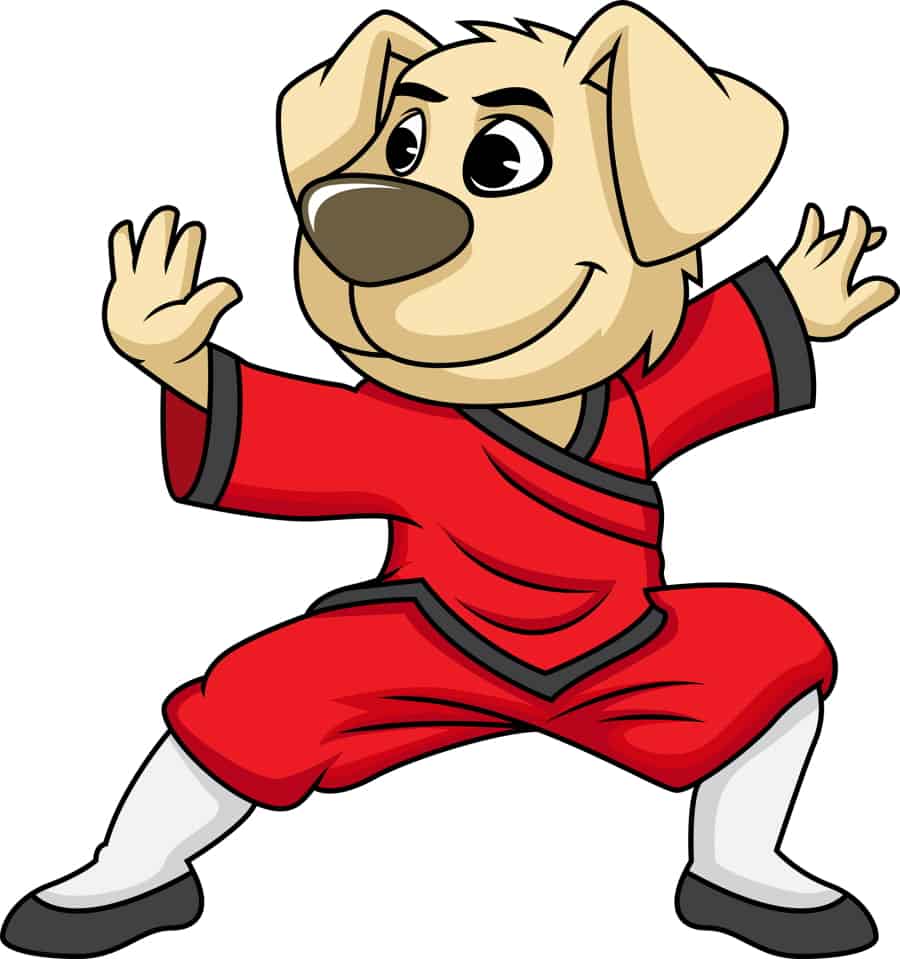
This is an interesting question. It brings up the idea of why there are uniforms in the first place and when the tradition got started. It also shines light on the practice in Kung Fu. Is there a uniform or prescribed way of dressing in Kung Fu?
A Kung Fu uniform is called yī-fu (clothes) or fú (suffix for clothes). A military uniform is called zhì-fú. In Tai Chi Chaun the uniform is called Tai Chi–fu. In Shaolin Kung Fu the traditional dress called hàn fú is used. Most adopted the Chinese popular style from the 18th thru 20th centuries.
Some styles of Chinese Kung Fu are similar in dress to Japanese styles like Aikido, Jujutsu, and Kendo where direct ancient traditional representations of clothing were attempted. Though today you will see many Kung Fu students wearing workout style baggy pants and t-shirts when they train.
These pants are patterned after the 1980’s weightlifting style workout sweats. If you would like to see a fun characterization of these same pants, see my article on Rex Kwon Do pants here.
Contents
When Did Wearing Uniforms In Kung Fu Training Start?
There is little doubt among historians that there are several indicating factors concerning when uniform dress codes entered the Chinese martial arts. There are three main areas that led to the universal acceptance of dress codes.
It must be said that there are many sources that make sense as building blocks to arrive at where we are today. As well, the dress codes today vary depending on use and tradition and it is fairly easy to see the influence that caused it.
From the earliest days of these martial arts though, it is usually one of these three main categories that we find the roots of the Kung Fu uniform.
The Military Conection
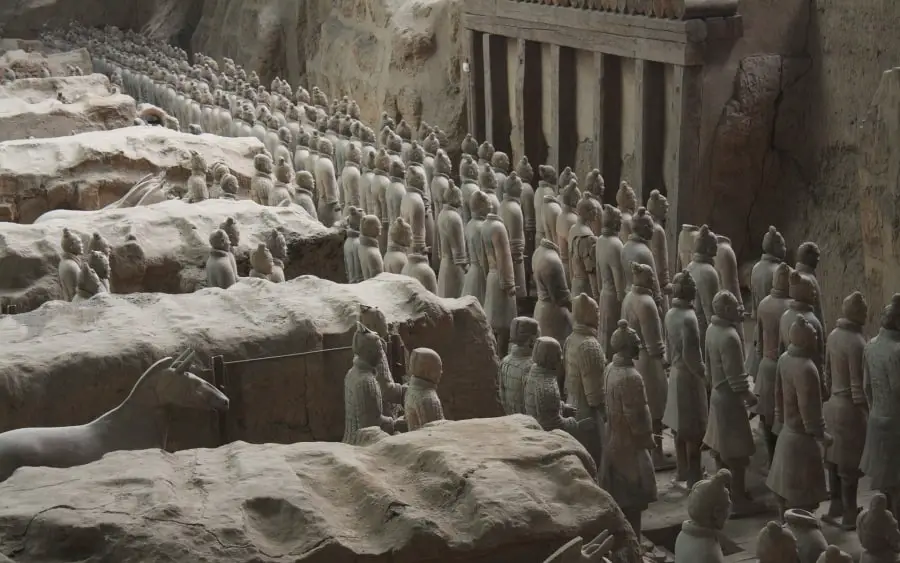
During ancient times, many of these systems were taught by families to their sons going into combat in order to help them survive. Not only this, there would be prescribed fighting styles and techniques within the military forces they joined themselves.
Techniques were passed down generation to generation in families and it was no different in the military lineage. The successful ones were kept and the others discarded. This is the same for the types of uniforms worn.
These boys and men would enter military service where the dress code was set. Sometimes they would retain small emblems of family heritage, but for the most part the ‘uniform’ nature of battle dress (Zhi-fu or uniform) prevailed.
As you can see, we derived much in the martial arts from these military standards, both technique and clothing wise.
We even have military forms of martial arts in most major branches of the U.S. armed forces today. These systems have their basis in departments like the Marine Corps MCMAP program.
The Monk Connection
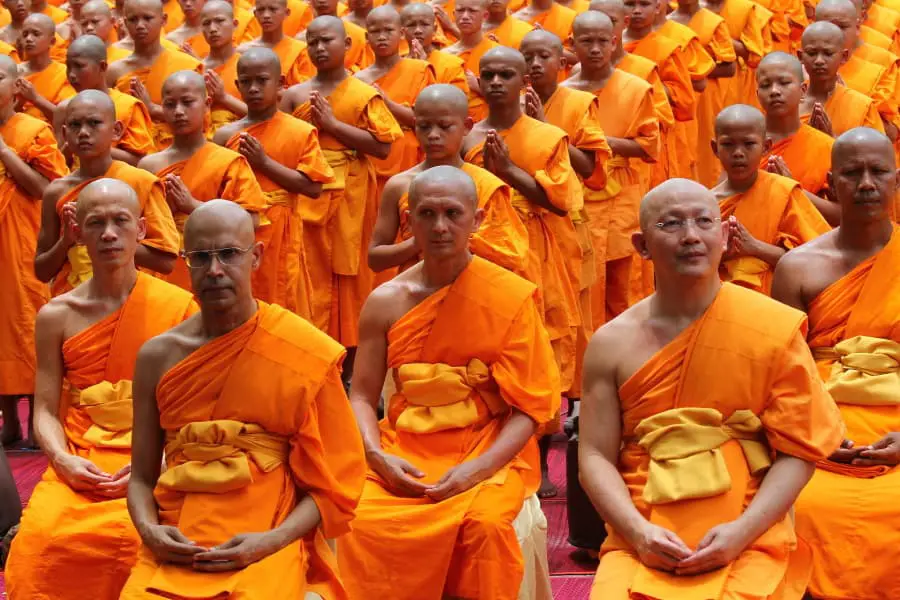
Another of the major influences on the Chinese martial arts was the techniques said to have been developed in the monasteries and religious communities of the mountains of China. Some of it is myth and some of it has the air of truth to it.
As the story goes, many monks would be attacked and injured in rural areas for their possessions or out of prejudice. These monks would tend to have engraved and even gold plated artifacts.
In order to protect themselves and their monasteries they began to develop, through trial and error it seems, methods of fighting that utilized armed and unarmed techniques. These techniques were blended with the religious elements of their faith tradition to form what we now know as Shaolin Kung Fu.
In reality, there were more feuds than robbers at the heart of this scenario. There were open rivalries between differing sects and students of various masters. These feuds would even see monasteries raided, not by bandits, but by rivals looking to exert dominance.
Whatever the truth is, one thing that is certain is that we now have a martial art system practiced and spread by the Shaloin monks of China. Their religious attire strongly influences the way in which students of the style and even other styles dress.
This way of dress is considered traditional clothing (hàn fú) in the Chinese culture. The monks tend to have subdued colors and more base materials in its construction, but the style and fit of the uniforms are of the hàn fú category.
The Modern Connection
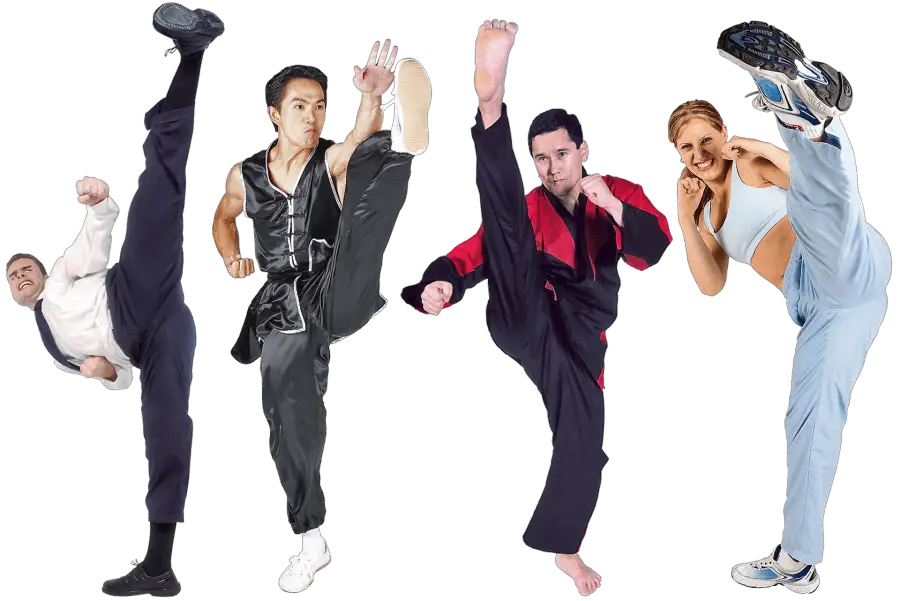
Yet, there is more to the story. Later as these systems became normalized in popular civilian life for self defense, cultural expression, and even health and fitness training there was a definite evolution in all directions where the clothing options were concerned.
Many took on more modern influences from aerobics, boxing, and newer military combative arts. Not all styles utilize the traditional attire in favor of boxing shorts, t-shirts, or workout style pants.
Let me say here that this is not a statement judging any of these decisions. Some are made for practical purposes and some for pure marketing ones. The students following these newer dress codes are obviously finding what they wanted and that is the point isn’t it?
The wide variety of type of clothing for Kung Fu practitioners of all types is a combination of a lack of an overarching governing system to the styles and the changes that naturally come with time.
Now, let’s look at several of the main branches in the Kung Fu tradition of Chinese martial arts and see what they call their uniforms and what they look like.
What Uniforms Are Called In Different Styles Of Kung Fu?
Though this may seem like the place where you will find a variable smorgasbord of names and designations, in reality all of these will reinforce one or two traditions in the names used for Kung Fu attire.
Most of them are simply variations of the name for clothes in Chinese (yī-fu or the suffix fú). To be fair, most styles do the same thing in most other cultures. In Japanese for instance, gi which is commonly used for a Karate or Judo uniform simply means clothes or outfit.
You will find the same thing true in the Chinese arts. Though English speakers search for a unique proper name, in reality it is usually a simple noun or adjective that is used.
Tai Chi Chuan Kung Fu Uniform Name
You will see many Tai Chi practitioners wear many different types of clothing. The traditional or uniform clothing is called a Tai Chi-fu. It is usually made of silk, cotton, or some silk-like material and is worn in a flowing cut. To order a set of these soft flowing clothes for yourself, visit this link to get yours from Amazon.

If you see a group of elderly people in a park or public space practicing the art, normally you will not see many of them wearing this type of clothing. They will opt for comfortable outfits that do not restrict their movements, and in the style they normally wear day to day.
Where you will see this more traditional style is usually organized schools or most assuredly in demonstration shows. Some groups wear these uniforms so infrequently that they will refer to them as ‘demo suits’.
None of this is to say that there is anything wrong with wearing these options or that those that choose only to practice wearing them are somehow misled. The contrary may be more true.
Uniforms add to the sense of belonging to an art. Those that don’t use them run the risk of slowly falling away from its practice. The ultimate goal of learning any martial art is time in authentic practice. The longer this is maintained, the higher the chance the student will become proficient.
Tai Chi-fu like other Kung Fu uniforms not only serve practical purposes in movement and training, but they also aid in the mental state one must remain in to continue the practice for many years. That is the primary goal of a student.
Wing Chun Uniform Name
Wing Chun style of Kung Fu is the original style of our next section’s founder Bruce Lee. It is also the basis for the popular movie series about it’s founder Ip Man, or Yip Man. The movies starring Donnie Yen can be ordered and sent directly to your house at this link from Amazon.
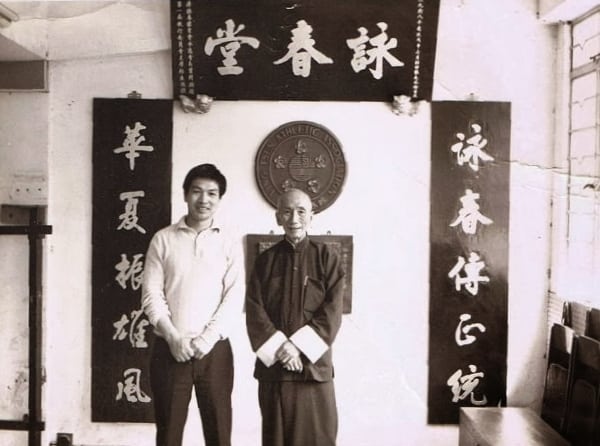
The uniform of Wing Chun Kung Fu is heavily influenced by the style of workout clothing chosen by its founder. His choices are representative of the styles of clothing in his youth that even persisted to his day. The large cuffs and frog buttons of the jacket are commonly seen in the uniform of this Kung Fu style.
Though we in the western world may label this as a uniform, it was in actuality a style of common clothing worn by people in their everyday lives in certain times in Chinese history. Uniforms cost money and sepecific materials like silk were relegated to upper class members of society.
For the common man, it was simply not necessary unless the instructor was very popular and had rivals. In this case insignia or other designations could be worn to signify loyalties.
What we see today though in Wing Chun Kung Fu is rightfully called a uniform or zhì fú for one main reason. It is decidedly different from the normal clothes that an average student of Wing Chun would wear to work or school. Even a t-shirt and sweat pants could be considered a uniform if it is specifically and unilaterally worn by a group for that purpose.
The uniform of choice with ties directly to the founder of Wing Chun will be the more traditional fú worn by Ip Man. To get a version of the same uniform, follow this link to Amazon.

Jeet Kune Do Uniform Name
Arguably the most famous of the students of Ip Man and his Wing Chun system was the notorious Bruce Lee. The uniform of the style he founded though highly cinematic in clothing and style did pay direct homage to the Wing Chun’s founder, at least in the beginning.
We see the older style of dress in many of the early films and appearances of Bruce Lee. This became synonymous with a style of uniform or zhì fú for students of the art. Though, Bruce and Ip Man alike would probably have told you that it was simply a Chinese style of clothing.
Today the black overcoat and white undershirt in the old Chinese style can be seen in some training groups and schools. There are several versions of these, but the ones seen being worn by Lee in the Enter the Dragon movie is the more common. To check out pricing on a set of clothes like the one Lee wore in the movie, check out this option on Amazon.

In competition with the rising popularity of the Karate systems of the 20th century, more and more Jeet Kune Do instructors began to either adopt this form of uniform or reject it outright in favor of the t-shirt and loose pants version. Either way, though its famous founder would decry the use of uniforms, both options became just that.
As Lee’s movie carrier continued and the influences of the styles of the west and of the time period prevailed, his ‘uniform’ took on a decidedly different appearance. Though it was primarily for the role played in the movie Game of Death, the yellow jumpsuit he wore became synonymous with Jeet Kune Do.
Some would say that this wasn’t meant to be the case by Lee himself, yet his actions would say otherwise. There are many clips of him wearing this exact outfit while promoting his style, speed, and skill. This jumpsuit was not simply intended for one movie appearance.
As a side note, Lee’s jumpsuit Kung Fu uniform is called sǎnbīng tiàosǎn fú in Chinese. But that really was a 70s American thing.
If you would like to get your version of Bruce Lee’s famous jumpsuit for a costume party, celebration, or your own personal workout attire, you can get one in your size, delivered right to your door with this link from Amazon.

Shaolin Kung Fu Uniform Name
When we dive into what a Kung Fu uniform is called in Shaloin style, we now are looking at a completely different class of people in history and their attire. The material and how it was worn differed from that of the common man.
This held true in the elevated class of monks, even though they would tone down colors and even material types. Silk was designated for the upper classes of Chinese society and it wasn’t until the 18th century that this practice was relaxed.
Due to tradition and orthodoxy that follows many religions, the robes of the Taoist monks didn’t change significantly over the years. This in an of itself designates their robes as a form of zhì fú, or uniform.
Today, many studying the traditional Taoist forms of Shaolin Kung Fu will wear these same traditional robes of centuries past. Though the term cháng páo that means a traditional men’s robe is not commonly used, neither is the term for traditional styles either, hàn fú. Though this is precisely what the term hàn fú refers to.
The Chinese term hàn fú when applied to martial arts attire points to the traditional and many times upper-class robes worn by the Chinese years ago. These more than likely weren’t worn by the commoners of that time, but today they can be seen in traditional settings worn by people of all walks of life.
The monastic practice of the Taoist monks have a distinct take on this hàn fú tradition. The colors are usually grey, orange, or brown, and silk is rarely used. The style is baggy for comfort and easy of use in most every activity and is well suited for Kung Fu practice.
If you would like to own traditional zhì fú or uniform hàn fú style robes of the Taoist monks, you can find your size and have it shipped to your home at this link to Amazon.

Shaolin Boxing Uniform Name
As with most all boxing styles, the primary focus of systems like Shaolin Boxing is the bout held in a ring. To this end, most don similar styles of boxing shorts with no shirts as their training option. In colder weather, track suits and sweatsuits take their place, but all are usually patterned after the popular sport and fitness attire of the time.
Whether it is in Shaolinquan (Shaolin boxing) tradition or the overarching Wushu Sanshau (Chinese Kickboxing) tradition as a whole, you will find the primary training attire is the boxing short. This is not to say that other forms of zhì fú or even hàn fú are not used. They sometimes are when the traditional aspects of the arts are practiced.
Yet many times, even with these more traditional elements, track suits and other modern forms of uniforms are preferred. This is true in many sports based systems that take a highly pragmatic approach to training for their specific competitions.
To get a pair of similar boxing or kickboxing style shorts for yourself at a very reasonable price, check out this link at Amazon.

Qigong Kung Fu Uniform Name
Students of the religious and meditative art of Qigong Kung Fu call their uniforms the same names as would those in Shalin Kung Fu and Tai Chi. Those that wish to wear traditional clothing will most likely choose styles from the hàn fú or traditional style.
This usually takes the form of a Shaolin monk’s robes or they could simply wear the Tai Chi-fu. This is if they choose to wear the traditional style at all. Many practitioners don’t, and select comfortable modern alternatives.
What We Call A Kung Fu Uniform Takeaway…
There are other styles that use the same concepts when choosing what to wear as the ones we have just looked at in the Chinese Kung Fu systems. What a Kung Fu uniform is called in each one of these systems varies very little from the ones here.
The main designation for the uniforms worn in most all Chinese systems is ‘clothing’. It is simple yet efficient. Though westerners would prefer a proper name given to the attire, like many concepts the east and the west differ on perspective and philosophy.
In the west, uniforms take on a kind of life of their own and confer status. In the east, a more humble approach to clothing worn is adopted and inconspicuousness is valued above most else.
The general terms of yī-fu (clothes) or fú (suffix for clothes) and the words zhì-fú (military style uniform) and hàn fú (traditional robes or clothing) are common words describing the clothing rather than naming it. This simple solution mirrors much in the martial arts of China.
